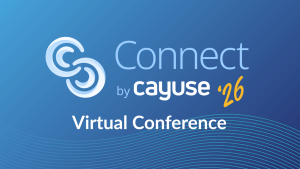Blog
Prorating Grant Budgets to Help Estimate the Availability of Funding
- Government
- Healthcare
- Higher Education
- Life Sciences
- Nonprofit
It’s exciting when a sponsor approves a research proposal. Suddenly researchers have money to fund their studies! But the last thing you want to happen is overspending: going through the funding too fast. Ideally, the money will be evenly spread out throughout the research lifecycle, not running out too soon nor ending up with funds left over afterward.
That’s where prorating grant budgets comes in.
Prorating grant budgets is typically the responsibility of research administrators, who have to identify a group of grants and then determine how much funding is available from each grant during a certain period. It’s not as easy as taking the amount of the grant, dividing it by four, and then saying, “Here’s how much money you have each quarter!” Grant budget periods start and stop at different times and rarely align with their institution’s fiscal year. And when future periods are involved, budgets or projected expenditures must be used instead of actuals. Anyway, let’s talk about how you go about prorating grant budgets.
How to prorate grant budgets
Prorating grant budgets involves estimating the amount of a grant’s budget designated for a particular fiscal period. It’s relatively simple:
- Define the fiscal period for the calculation. (This is often your organization’s fiscal year.)
- Identify all grants with budget periods that overlap the defined fiscal period and belong to the investigator, department, or institution of interest.
- Calculate the percentage of the budget period (time) of each grant that overlaps the defined period. This can be calculated by the number overlapping days divided by the number of days in the grant budget period.
- Multiply the percentage calculated in step 3 by the grant budget.
- Add the values from step 4.
The concept assumes linear spending, which is usually true for research grants heavily weighted with personnel costs, but not always. Here are some things that make prorating grant budgets less accurate:
- Large equipment purchases or other capital expenditures
- Extended delays in hiring personnel
- The need of short-term employees
- Short-term grants or budget periods less than a year
- Unplanned, no cost extensions
Other issues to consider
Prorating grant budgets isn’t hard, but you do need to consider how you want to do a few things:
- How pending grants should be included in the process. Pending grant funding is not guaranteed. When pending grants are included, they should be noted and totaled separately from active grants.
- How to identify which grants to include. Some grants may be difficult to identify because the investigator of interest has a minor role or the grant is house outside of their department.
- Does the analysis involve just salary costs? Or does it need to account for the entire research operation? When the analysis involves the entire research operation, grants housed outside of the department of interest may need to be noted and totaled separately.
- Does the analysis involve direct, indirect, or total costs? If indirect costs are involved, what portion is allocated to the investigator, department, or institution.
- Are no-cost extensions being considered? If so, the grant budget period needs to account for the extension.
Tools to help with prorating grant budgets
There are two primary tools available for helping with prorating grant budgets: spreadsheets and grant management software.
Spreadsheets
To prorate using a spreadsheet, load the spreadsheet with the budget periods and amounts for the identified grants. Use extra columns to calculate the percentage of the budget period and the amount of the budget that falls within the overall analysis period. The spreadsheet is normally sorted and subtotaled to account for pending proposals as well as grants housed outside of the department of interest. The downside of spreadsheets becomes apparent when the analysis involves issues such as multiple investigators participating on the same grant; when large numbers of grants are involved; and when the data needs to be analyzed from different perspectives.
Software
Many grants management software systems deliver this same functionality. They typically differ from spreadsheets in that they include separate data entry and reporting functions. They also offer the advantage of automated calculations and can identify subsets of grants and quickly present the information in different formats as needed. Grants management systems also allow multiple users to access and modify information simultaneously.
We at Cayuse have provided grant management solutions for research teams since 1994. Our entire focus is on helping you succeed in managing grants and research-related activities. For more information, reach out today!

